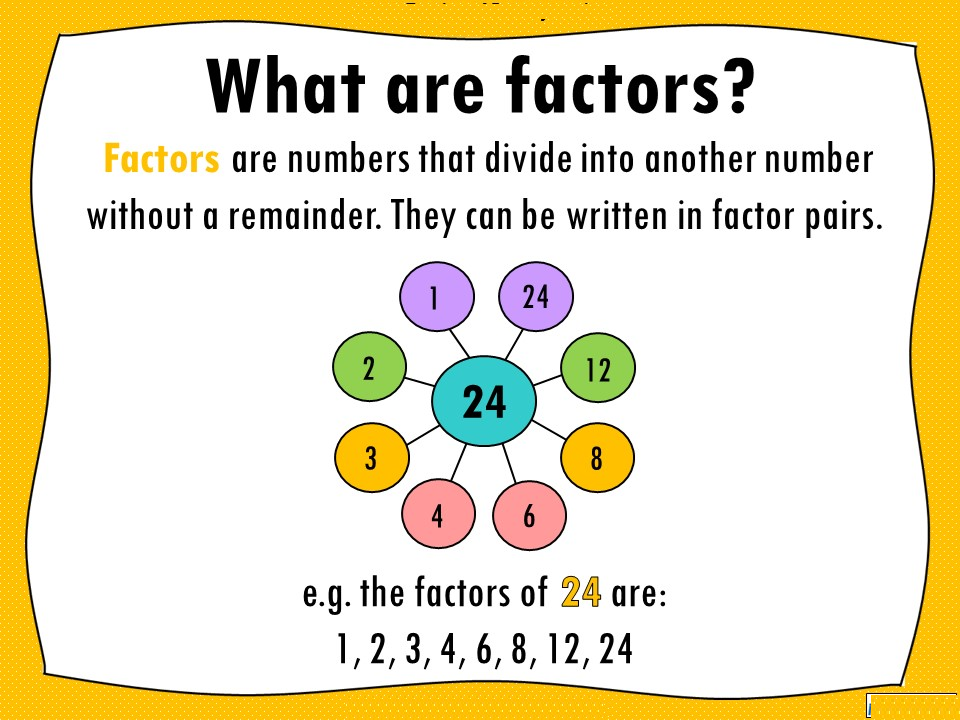Introduction to Faceted Navigation in SEO
Faceted navigation is a cornerstone of user-friendly e-commerce and content-heavy websites in 2025, enabling users to filter products or information using multiple criteria like price, brand, size, or category. However, its dynamic nature poses significant challenges for search engine optimization (SEO). Faceted navigation generates numerous URLs based on filter combinations, which can lead to duplicate content, crawl budget waste, and index bloat if not properly managed. Optimizing faceted navigation ensures that search engines like Google can efficiently crawl, index, and rank these pages while delivering a seamless user experience.
Entities such as URL parameters, Googlebot, and canonical tags are central to this process. Semantically, faceted navigation aligns with user intent by targeting specific, often long-tail queries like “men’s black running shoes under $100.” However, mismanaged facets can dilute page authority or overwhelm crawlers, reducing visibility in search engine results pages (SERPs). In an era where Google’s AI-driven Search Generative Experience (SGE) prioritizes relevance and efficiency, proper optimization is critical for e-commerce sites and beyond.
This guide provides a comprehensive, actionable approach to optimizing faceted navigation for SEO. Drawing from industry best practices and Google’s guidelines, we’ll cover definitions, challenges, strategies, tools, real-world examples, and emerging trends. Whether you manage an online store or a content platform, these techniques will help you build topical authority, enhance user engagement, and boost rankings for high-intent queries.
Understanding Faceted Navigation: Core Concepts and Entities
Faceted navigation, also called filtered navigation, is a system that allows users to refine content or product listings through independent attributes, known as facets. These might include price ranges, colors, sizes, or ratings on an e-commerce site, or topics and dates on a blog. Each filter selection generates a dynamic URL, often with query parameters like /products?color=blue&size=medium.
Key entities include:
- Facets: Individual filter categories (e.g., brand, price).
- URL Parameters: Query strings appended to URLs (e.g., ?brand=nike).
- Googlebot: The crawler that fetches and indexes pages.
- Indexing Controls: Canonical tags, noindex directives, and robots.txt rules.
- Crawl Budget: The limited number of pages Google crawls per site.
Semantically, these entities connect to user search behavior. Facets target specific intents, such as transactional queries for “cheap laptops” or informational queries for “best DSLR cameras 2025.” However, uncontrolled facet combinations can create near-duplicate pages, risking penalties for thin content or keyword cannibalization. Optimizing involves prioritizing high-value facets, ensuring unique content, and managing crawler access to align with user needs and search engine efficiency.
The Evolution of Faceted Navigation in SEO
Faceted navigation emerged in the early 2000s with the rise of e-commerce platforms like Amazon, evolving from basic category menus to sophisticated, AI-enhanced filtering systems by 2025. Early SEO challenges centered on duplicate content from parameter-heavy URLs. Google’s 2014 guidelines on faceted navigation emphasized using canonical tags and robots.txt to control indexing.
The 2021 Page Experience Update tied faceted navigation to Core Web Vitals (CWV), as excessive URLs can slow load times. By 2023, dynamic rendering gained traction for JavaScript-driven facets, ensuring crawler compatibility. In 2025, integration with SGE and entity-based search requires facets to map to semantic clusters, like “athletic shoe attributes,” to maintain relevance. This evolution reflects a shift from managing raw URL counts to building intent-driven, user-centric navigation systems.
How Faceted Navigation Works in SEO
Faceted navigation generates dynamic URLs when users apply filters, each treated as a unique page by search engines. Googlebot crawls these URLs, assesses their content, and decides whether to index them based on signals like uniqueness, canonical tags, and meta directives. The process involves:
- User Interaction: Users select filters, creating URLs like /shoes?brand=adidas&price=50-100.
- Crawling: Googlebot fetches the URL, parsing HTML and JavaScript.
- Rendering: For JavaScript-heavy facets, Google renders the page to access dynamic content.
- Indexing: Unique, valuable pages are indexed; others may be ignored or deprioritized.
Semantic relationships are key: High-value facets (e.g., popular categories) drive traffic, while low-value ones (e.g., obscure sizes) can waste crawl budget. Unoptimized systems create “crawl traps,” where infinite filter combinations overwhelm crawlers, reducing indexing efficiency for critical pages.
Benefits of Optimizing Faceted Navigation for SEO
Proper optimization delivers multiple advantages:
- Enhanced User Experience: Intuitive filters improve navigation, increasing dwell time and conversions.
- Targeted Organic Traffic: Indexed facets rank for long-tail queries, capturing niche audiences.
- Efficient Crawling: Controlled URLs preserve crawl budget for valuable pages.
- Improved Rankings: Unique, optimized facets strengthen topical authority.
- Higher Conversions: Precise filtering aligns with user intent, boosting sales.
- Scalability: Structured systems handle large inventories without SEO penalties.
For example, optimizing a facet like “laptops under $500” can capture high-intent traffic, directly impacting revenue.
Challenges and Common Mistakes in Faceted Navigation SEO
Key challenges include:
- Duplicate Content: Near-identical pages (e.g., /shoes?color=red vs. /shoes?color=blue) dilute authority.
- Index Bloat: Excessive URLs overwhelm search engine indexes.
- Crawl Traps: Infinite filter combinations waste crawler resources.
- Thin Content: Facets with few or no results create low-value pages.
- JavaScript Dependencies: Dynamic facets may not render for all crawlers.
Common mistakes:
- Using directory paths (e.g., /shoes/red/) instead of parameters, complicating management.
- Allowing non-unique sorting (e.g., “sort by price” without content changes).
- Indexing zero-result pages.
- Mixing conflicting directives (e.g., noindex with canonical tags).
- Neglecting mobile responsiveness for facets.
Step-by-Step Guide to Optimizing Faceted Navigation for SEO
Follow this structured approach to optimize faceted navigation:
Step 1: Audit Your Faceted Navigation
- Use tools like Screaming Frog to crawl your site and identify all facet-generated URLs.
- Analyze Google Search Console (GSC) for indexed pages and crawl errors.
- Check for duplicates by comparing content across URLs.
Step 2: Identify High-Value Facets
- Use keyword research tools (e.g., Ahrefs, SEMrush) to find facets with search volume, like “women’s running shoes” or “budget smartphones.”
- Prioritize facets matching transactional or commercial intent; deprioritize low-value ones (e.g., obscure sizes).
Step 3: Implement URL Parameter Management
- Use query parameters (e.g., ?color=blue) instead of directories for scalability.
- Configure parameters in GSC’s URL Parameters tool to specify crawl behavior (e.g., “affects content” or “sorting only”).
Step 4: Apply Indexing Controls
- Canonical Tags: Point low-value facet pages to a parent page (e.g., /shoes?color=red → /shoes).
- Noindex Tags: Apply to pages with minimal value or thin content.
- Robots.txt Disallow: Block crawl traps like zero-result pages.
- Rel=”nofollow”: Use for links to non-critical facets to reduce crawler focus.
Step 5: Optimize On-Page Elements
- Create unique title tags, meta descriptions, and H1s for indexed facets (e.g., “Men’s Black Running Shoes | [Brand]”).
- Add structured data (e.g., Product schema) to enhance rich results eligibility.
- Ensure content uniqueness by adding descriptive text or user-generated reviews.
Step 6: Handle JavaScript-Driven Facets
- Use server-side rendering (SSR) or prerendering (e.g., Prerender.io) for JavaScript-heavy facets.
- Test rendering with GSC’s URL Inspection Tool to confirm crawler visibility.
Step 7: Optimize for Mobile and Performance
- Ensure facets are responsive and load quickly on mobile devices.
- Monitor CWV metrics like Largest Contentful Paint (LCP) using Lighthouse.
Step 8: Monitor and Iterate
- Track indexed pages and performance in GSC.
- Analyze click-through rates (CTR) and conversions in Google Analytics to refine facets.
- Regularly update sitemaps to reflect prioritized URLs.
Tools for Optimizing Faceted Navigation SEO
Leverage these tools to streamline optimization:
- Google Search Console: Monitors indexed URLs, crawl errors, and parameter settings.
- Ahrefs: Identifies high-value keywords for facet prioritization.
- SEMrush: Analyzes competitor facet strategies and search volume.
- Screaming Frog: Crawls sites to detect duplicates and thin content.
- Botify: Provides advanced crawl analytics for large-scale sites.
- Sitebulb: Offers facet-specific auditing and visualization.
- Lighthouse: Assesses CWV and mobile performance.
- Prerender.io: Serves pre-rendered HTML for JavaScript facets.
These tools build topical depth by analyzing semantic entities like URL structures and user engagement signals, ensuring alignment with search intent.
Common Myths About Faceted Navigation SEO
- Myth: All Facet Pages Should Be Indexed Reality: Only high-value facets with unique content should be indexed to avoid bloat.
- Myth: Canonical Tags Solve All Duplicate Issues Reality: Canonicals guide indexing but don’t prevent crawling, so use noindex or robots.txt for control.
- Myth: Facets Don’t Impact Site Speed Reality: Excessive URLs or JavaScript-heavy facets can slow load times, affecting CWV.
- Myth: Facets Are Only for E-commerce Reality: Content sites (e.g., blogs, directories) also use facets for filtering topics or dates.
Real-World Examples of Faceted Navigation Optimization
- E-commerce Retailer: An online shoe store used Ahrefs to identify high-demand facets like “running shoes under $100.” By indexing these, applying canonicals to low-value pages, and using SSR for JavaScript facets, they boosted organic traffic by 30% in six months.
- Tech Marketplace: A gadget retailer reduced index bloat by noindexing niche facets (e.g., specific memory sizes) and saw deeper crawling of category pages, improving rankings for “best laptops 2025.”
- Travel Booking Site: Optimized mobile facets with responsive design and prerendering, enhancing LCP and increasing mobile bookings by 25%.
High-Volume Questions About Faceted Navigation SEO
1.What Is Faceted Navigation and How Does It Impact SEO?
Faceted navigation allows multi-filter browsing, impacting SEO through potential duplicate content and crawl budget issues if unoptimized.
2.How Do I Prevent Duplicate Content from Faceted Navigation?
Use canonical tags to point to parent pages and noindex low-value URLs to consolidate authority.
3.Should I Use Robots.txt to Block Facet URLs?
Yes, block low-value or zero-result URLs to save crawl budget, but allow high-value ones.
4.What Are the Best Practices for E-commerce Faceted Navigation?
Prioritize high-demand facets, use unique on-page elements, and control indexing with canonicals and noindex tags.
5.How Does Faceted Navigation Affect Crawl Budget?
Uncontrolled facets create crawl traps, wasting budget on low-value pages; optimization ensures efficient crawling.
6.Can Faceted Navigation Improve Organic Rankings?
Yes, indexed high-value facets rank for long-tail queries, driving targeted traffic.
7.What Tools Are Best for Auditing Faceted Navigation?
Google Search Console, Ahrefs, and Screaming Frog help identify duplicates and prioritize facets.
8.How Do I Optimize Faceted Navigation for Mobile SEO?
Ensure responsive filters, fast load times, and mobile-friendly rendering for Google’s mobile-first indexing.
9.Is Dynamic Rendering Effective for Faceted Navigation?
Yes, it serves static HTML to crawlers for JavaScript-heavy facets, improving indexability.
10.What Role Do Canonical Tags Play in Faceted Navigation SEO?
They direct search engines to preferred URLs, reducing duplicate content issues.
11.How Can Faceted Navigation Support Long-Tail Keyword Strategies?
By indexing facets that match specific queries, you capture niche, high-intent traffic.
12.What Are Common Mistakes in Faceted Navigation SEO?
Indexing all facets, using directories instead of parameters, and ignoring mobile performance are frequent errors.
The Future of Faceted Navigation in SEO
By 2026, faceted navigation will integrate more deeply with AI-driven search. Personalized facets, powered by machine learning, will dynamically adjust to user behavior, enhancing relevance for SGE and voice search. Semantic entity optimization will be critical, as Google prioritizes topical clusters over raw keywords. Emerging trends include:
- AI-Driven Filters: Predictive algorithms suggesting facets based on user history.
- Voice Search Compatibility: Facets optimized for conversational queries like “find cheap running shoes near me.”
- Zero-Party Data: Leveraging user inputs for tailored navigation without privacy concerns.
Staying ahead requires monitoring Google’s Webmaster Guidelines and adopting scalable, intent-focused facet strategies.
Conclusion
Optimizing faceted navigation for SEO is a balancing act between user experience and search engine efficiency. By auditing URLs, prioritizing high-value facets, applying indexing controls, and leveraging robust tools, you can enhance rankings, drive targeted traffic, and build topical authority. Start with a comprehensive audit and implement these strategies to ensure your site thrives in 2025’s competitive, AI-driven search landscape.
Saad Raza is an SEO specialist with 7+ years of experience in driving organic growth and improving search rankings. Skilled in data-driven strategies, keyword research, content optimization, and technical SEO, he helps businesses boost online visibility and achieve sustainable results. Passionate about staying ahead of industry trends, Saad delivers measurable success for his clients.





